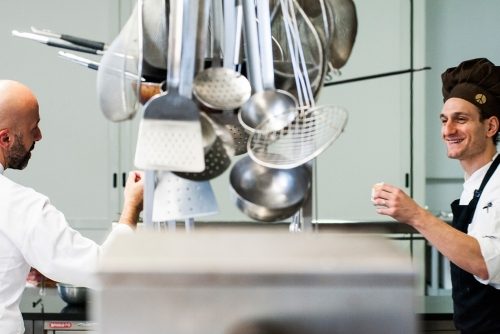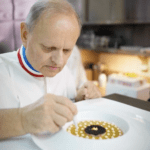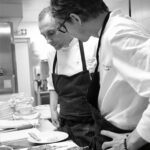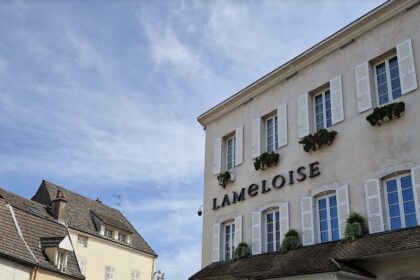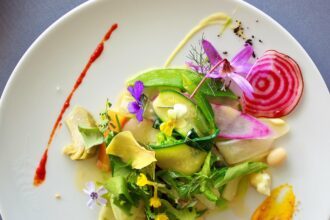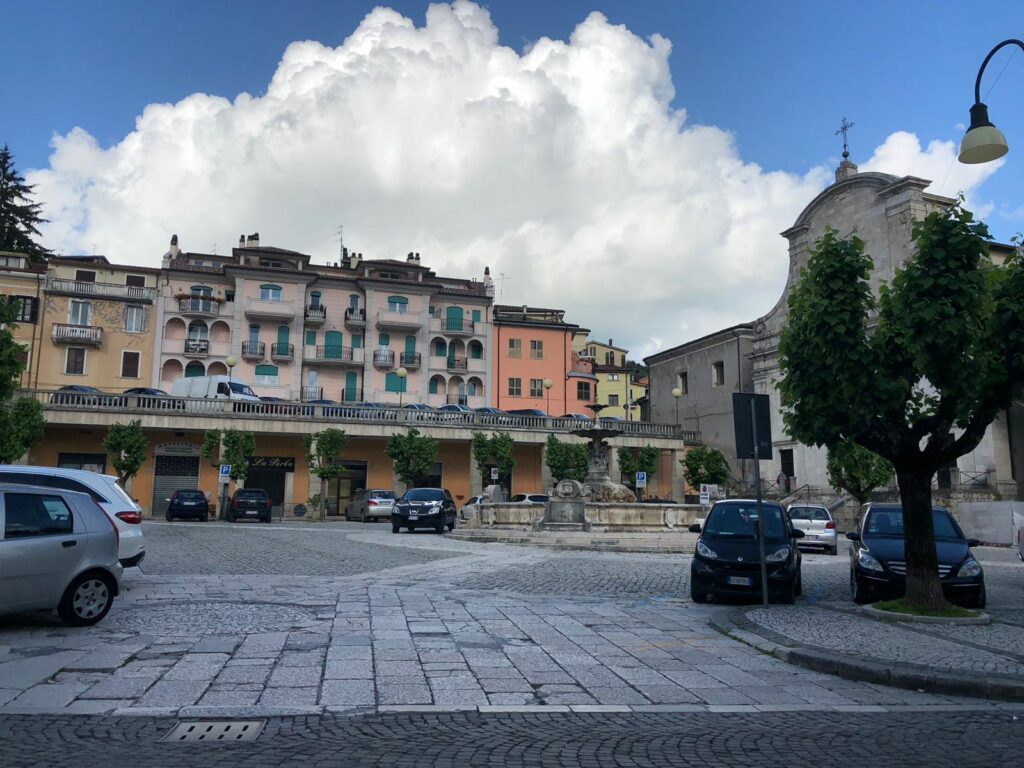
Located in a monastery in the medieval town of Castel del Sangro in Abruzzo, Reale is a highly touted restaurant which is not easy to reserve (about 20 covers) and is frequented by international foodies. I went there with the highest expectations, given the praise of trusted friends, and left somehow puzzled. I was puzzled because there was a discrepancy between what I had expected and what I found. I expected purity and intensity in a myriad of deceptively simple but complex (rather than complicated) preparations. I found interesting cooking, excellent broths, uneven dishes, technically good, but sometimes imprecise dishes. Some courses were excellent, while others were bland, bordering on ordinary. I got the impression that the cuisine is geared more to impress other chefs than to give pure pleasure and satisfaction, such as at Le Calandre and Del Pescatore, two Italian three-star Michelin restaurants that I esteem highly, one modern, the other classic.
We drank a glass of 2007 Laurent Perrier champagne; a glass of 2014 Valle Reale Trebbiano d’Abruzzo ‘Vigna del Convento’ which is slightly oxidative but has character and pairs well with earthy vegetables; a glass of 2007 Villa Gemma red (Montepulciano) which suffered from jammy fruit and drying tannins (over-oaked); and a half bottle of 2010 Jamet Cote Rotie, a complex, balanced, juicy wine with good precision and a long finish, where sweet berries and dry Mediterranean herbs intermingle and dance on the palette.
Among the amuses, the intense and slightly sweet tomato tart was outstanding. I wish the chef had used the tomato sauce in a pasta. Homemade breads also deserve special mention, particularly the crusty and dense loaf from Abruzzo.
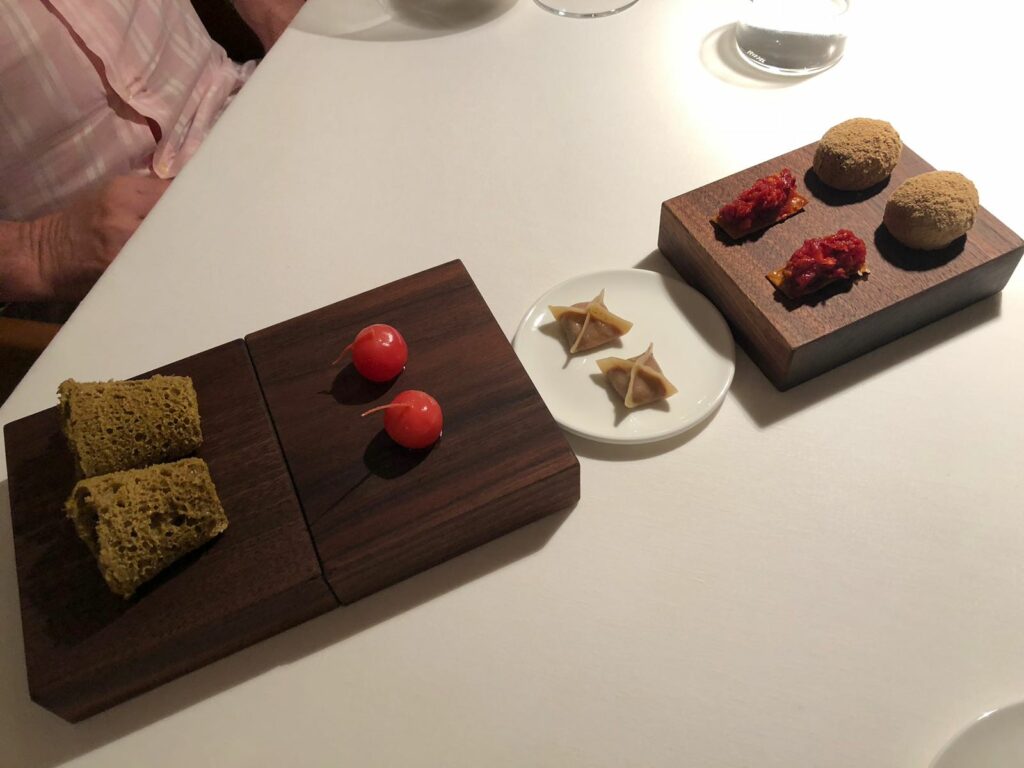
The first course was “veal sweetbread with a cream sauce, lemon and salt.” The quality of the sweetbread was very good, but it was not crusted as it should be to reveal the contrast between the crispy and the creamy. The sauce was too creamy at the expense of veal stock.
The “roasted Savoy cabbage” was the second dish. It lacked complexity, not to say it was bland. It was topped by cabbage cream and had a potato emulsion at the bottom. In my opinion, the 40 day fermentation process before the cabbage was roasted was far too short to impart depth to the cabbage.
The third dish was fine: “crunchy beef tongue with vegetables.” Chef Romito has a penchant for very soft textures. Accordingly, the tongue was cooked sous vide and finished by torch. The black dots, i.e. carbon vegetables, sat on the plate to satisfy the dictum of contemporary fine dining standards and aesthetic exigencies, rather than to maximize the impact on the taste buds. I could not help but think of great tongue preparations in some French bistros, which are beautiful in photos and on Instagram, but which have more depth in taste. Yet there was one surprise here: amazing crunchy wild asparagus.
The fourth dish, on the other hand, was a masterpiece. “Onion reduction with parmigiano buttons and toasted saffron” was Romito at his best, where intention, composition, and execution were all in harmony. The onion reduction was pure, without added water. The 36 months old parmigiano and saffron sat in the dish in perfect unison. This is a world class broth.
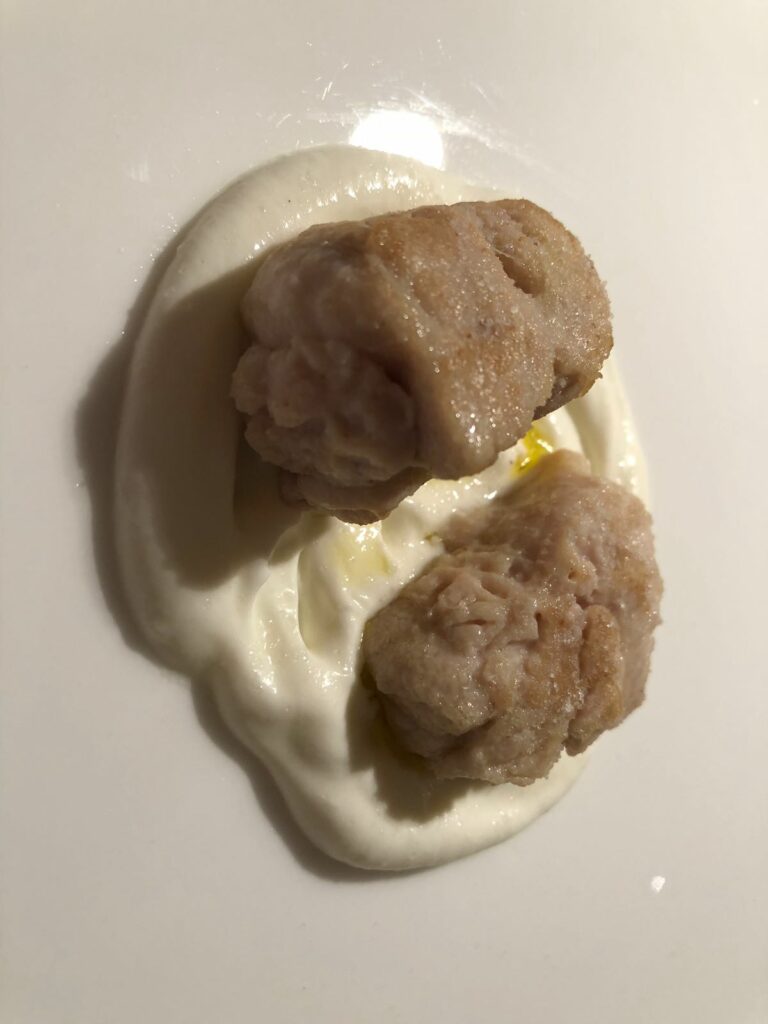
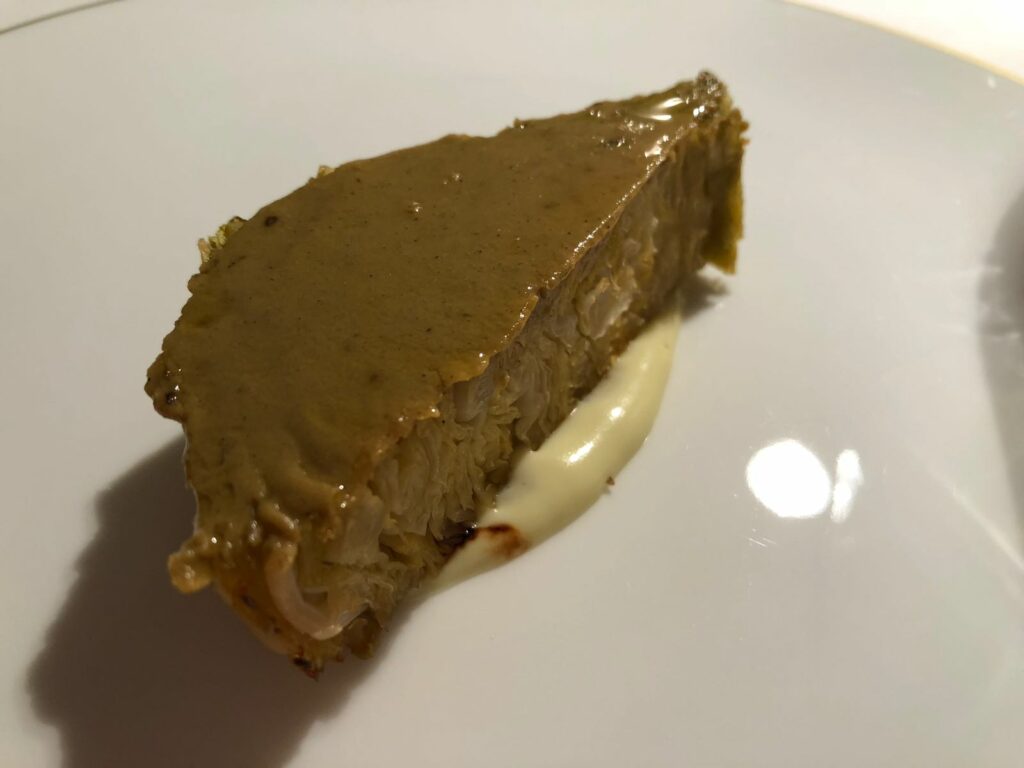
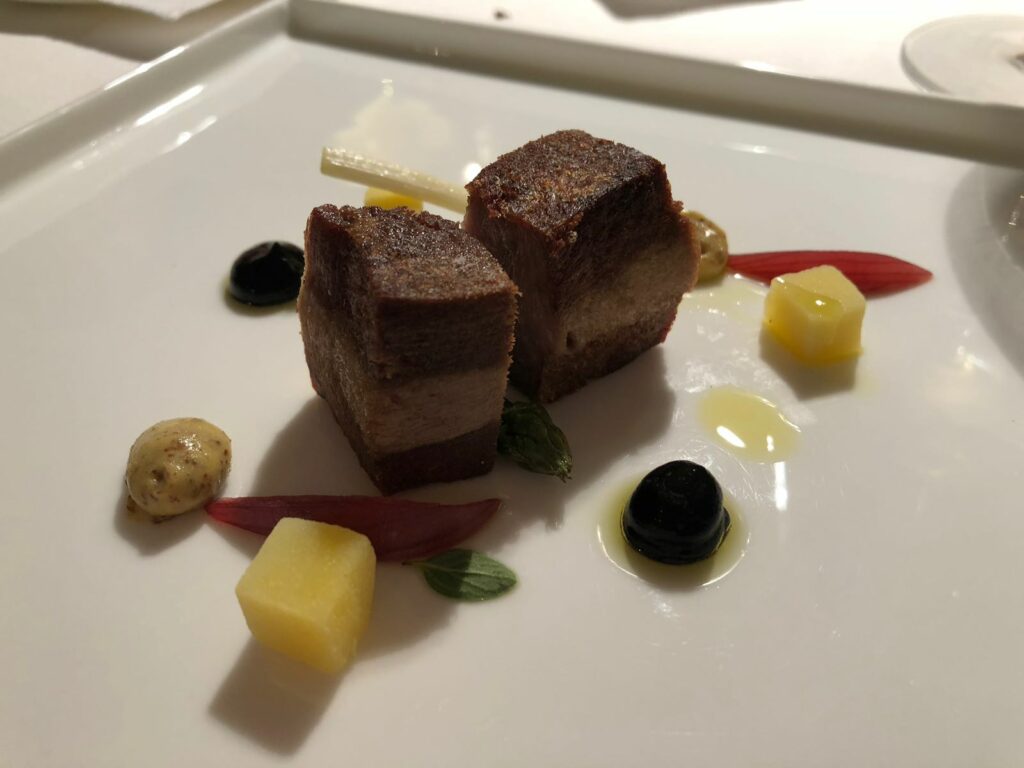
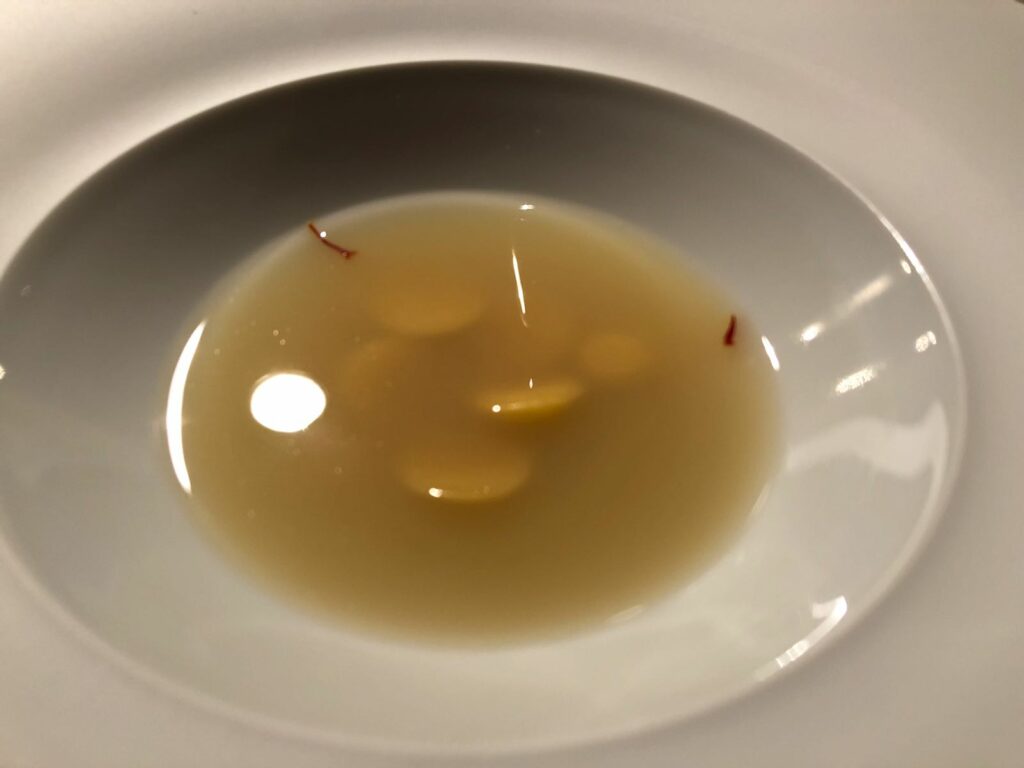
We continued with four small pasta dishes which showed where the hearth of the chef lies. Kudos to Romito for “semolina fettuccelle pasta, red prawn and pink pepper”. The gambero rosso came from Gallipoli (try them baked on salt at Puritate) and the sauce made from the head of the sweet prawns bound the dish together and added an extra layer of complexity. Many thanks to Romito for concocting a pasta which was not on the menu upon my request: “tagliolini with wild baby asparagus and parmigiana.” Crunchy and grassy with a bitter bite, the asparagus was extraordinary. The third pasta, “smoked tortelli” was good, if uni-dimensional. In contrast, the “tagliatelle cacio e pepe” would give the very best in Rome (Da Cesare, Da Felice) a run for the money. I was impressed by the freshness and aroma of the pepper that they used.

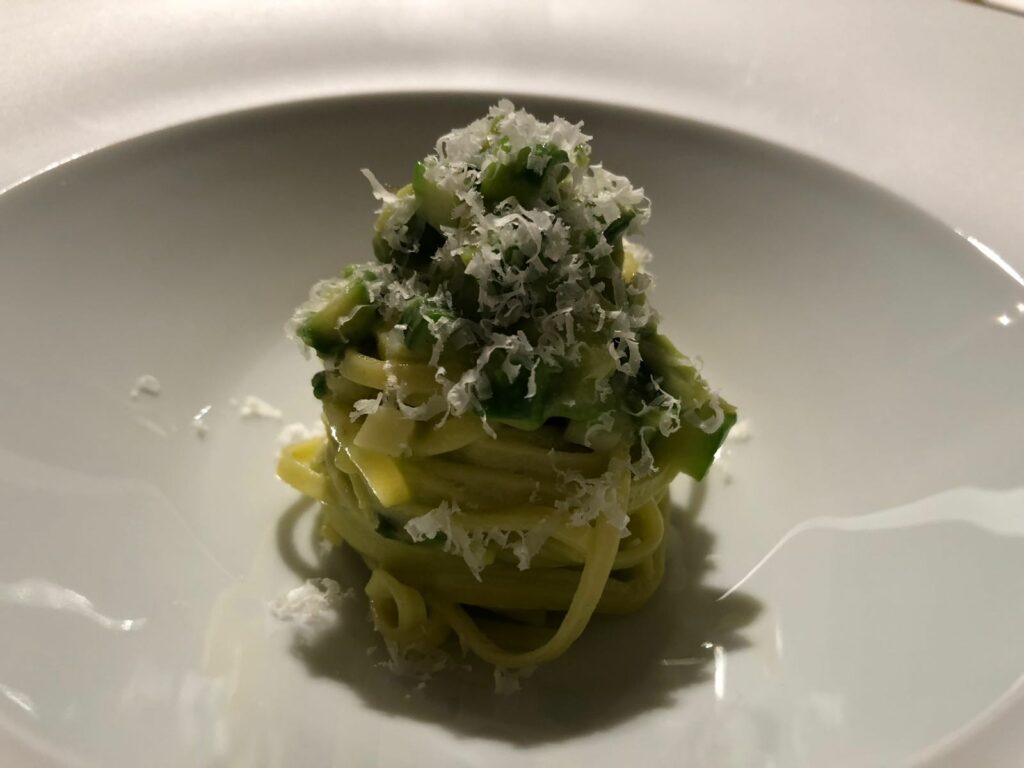
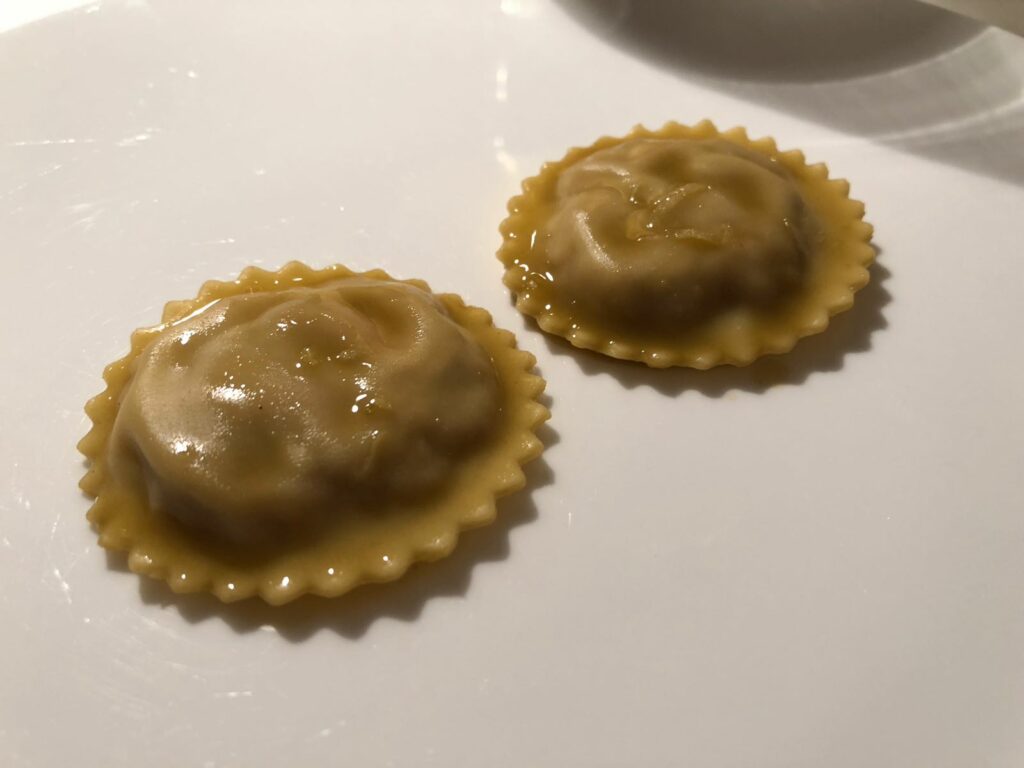
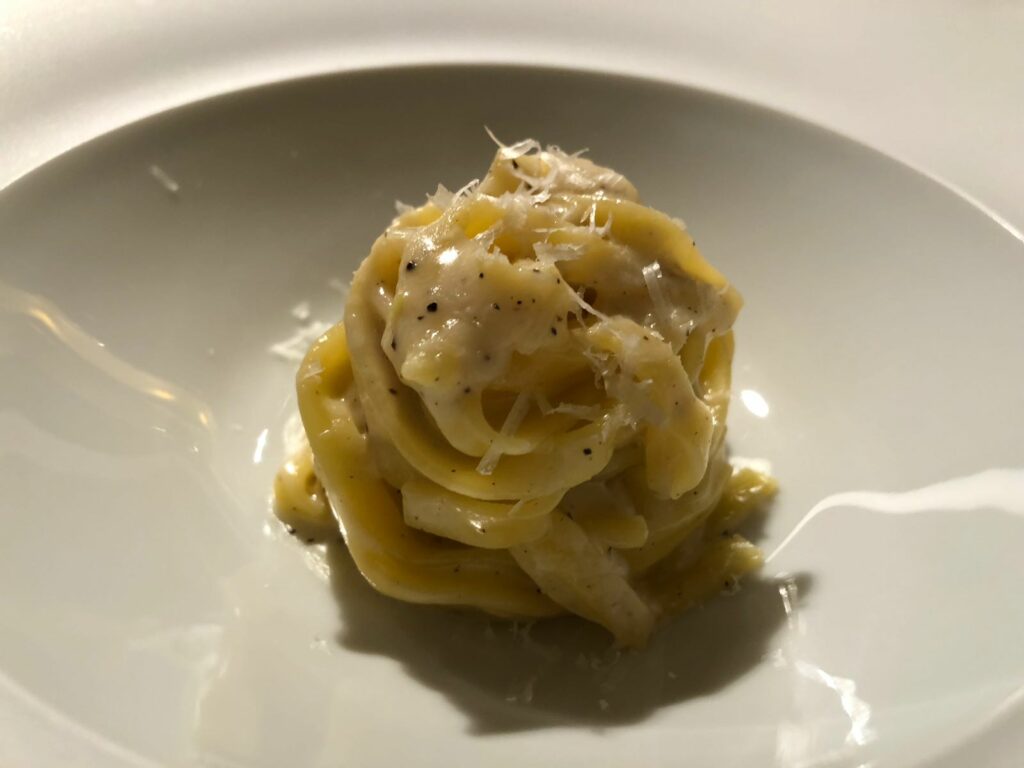
The two main dishes were disappointing. “Pigeon (from Piemonte) and pistachio” was cooked sous vide in a meat broth. One could certainly eat this pigeon with a spoon and it tasted like pigeon boiled at a low temperature. The technique used emasculated the juicy, fatty, gamey qualities of the pigeon and transformed it into a tame, lean, and soft meat devoid of an earthy minerality. Proper roasting or grilling are the right techniques for this tasty bird in order to bring out the gamey quality, but since these cooking techniques necessitate careful timing, star chefs prefer to standardize cooking and focus on plating. I also failed to appreciate the presence of pistachio paste in this dish.
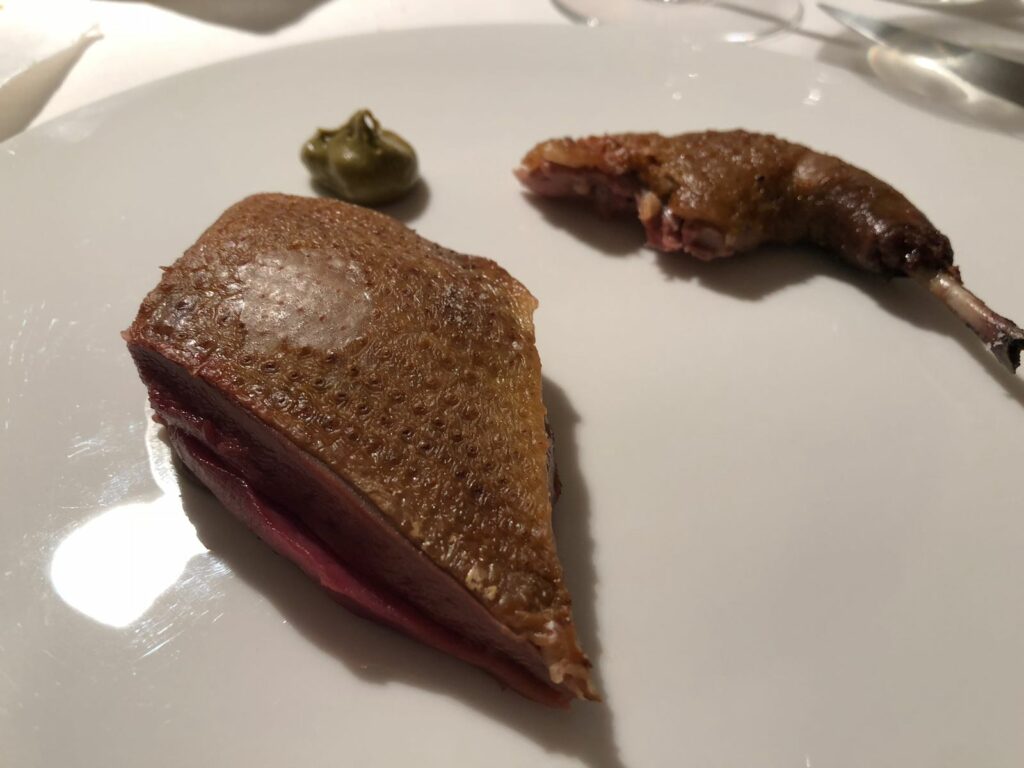
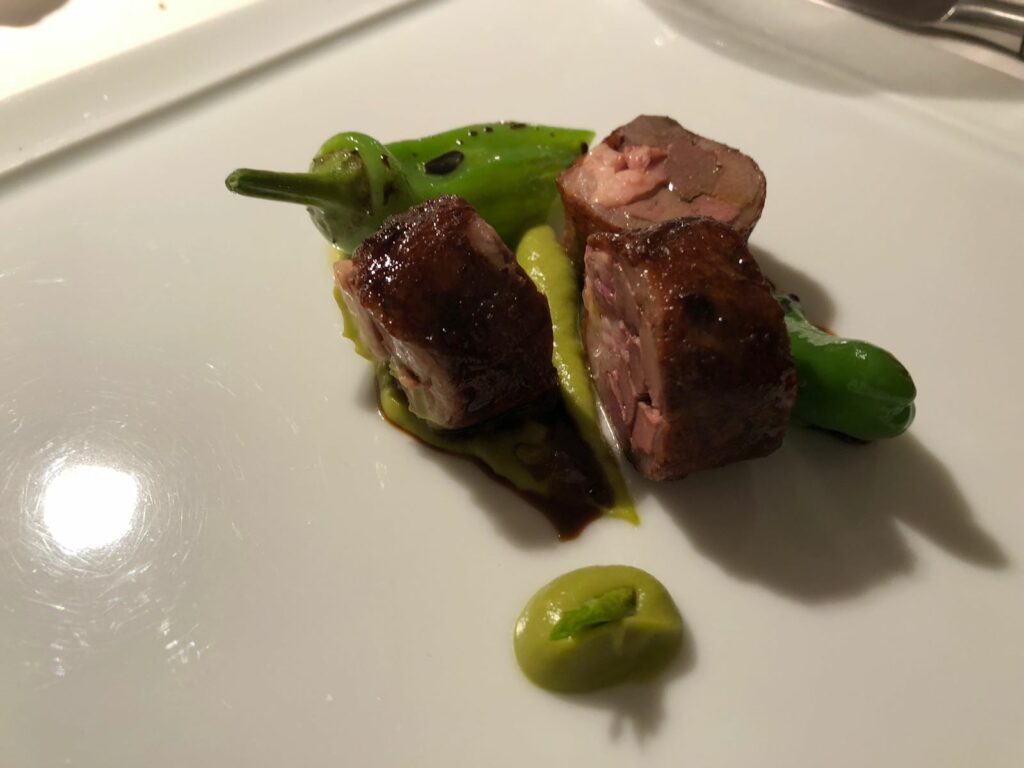
Torcinello, an offal dish prepared from lamb intestines wrapped around lamb liver or testicles is a dish I look forward to whenever I visit Puglia. The Abruzzo version is not too different and Romito uses lamb sweetbreads, lung, and liver. However, something must have gone wrong (possibly very few clients order this dish and ingredients had lost their freshness), and this otherwise rustic, peasant dish was not on par with what one gets in a traditional restaurant.
The final course was actually an appetizer that Romito sent out last, and for good reason. “Veal jelly, dried porcini, almonds and black truffle” is sweet, more like a modern earthy-sweet dessert. This is a very original dish with a well thought out combination and perfect calibration of ingredients which complement each other.
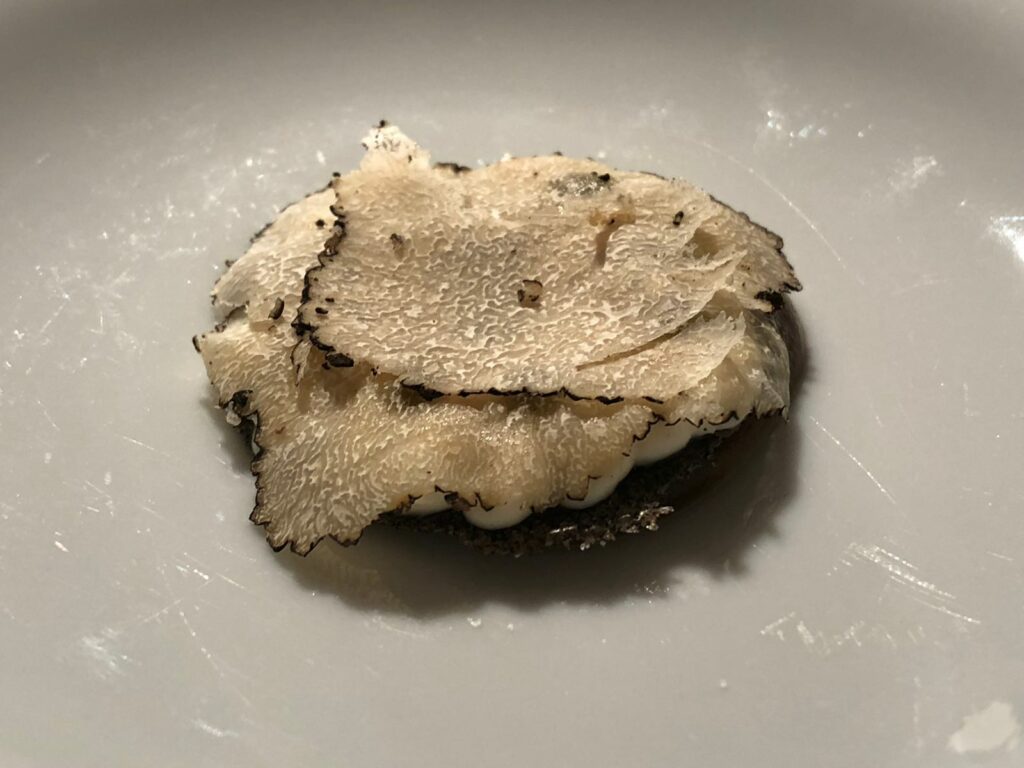
The cheese course was satisfactory. We especially liked an aged, but moist “caciocavallo”. We shared two desserts. “Meringue, raspberry and mou (caramel)” had a strange ash like flavor. The “licorice with flowered water ice, vinegar, white chocolate and balsamic vinegar” was quite a complex dessert where flavors blended well. It was multi-layered and left a fresh aftertaste.
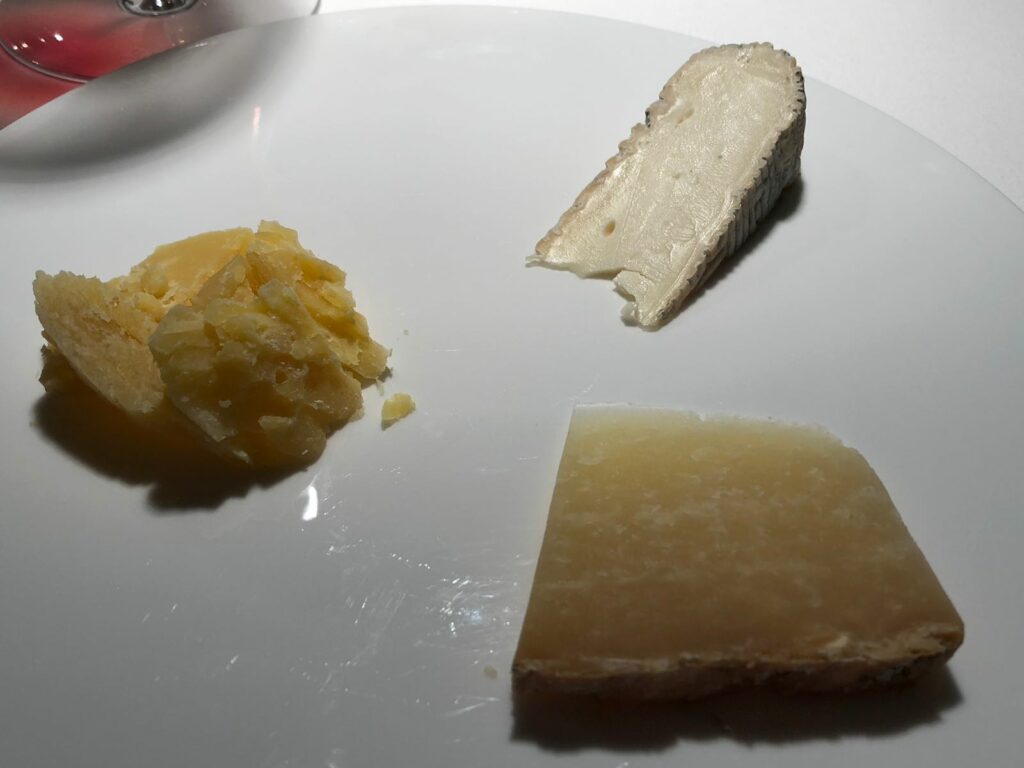
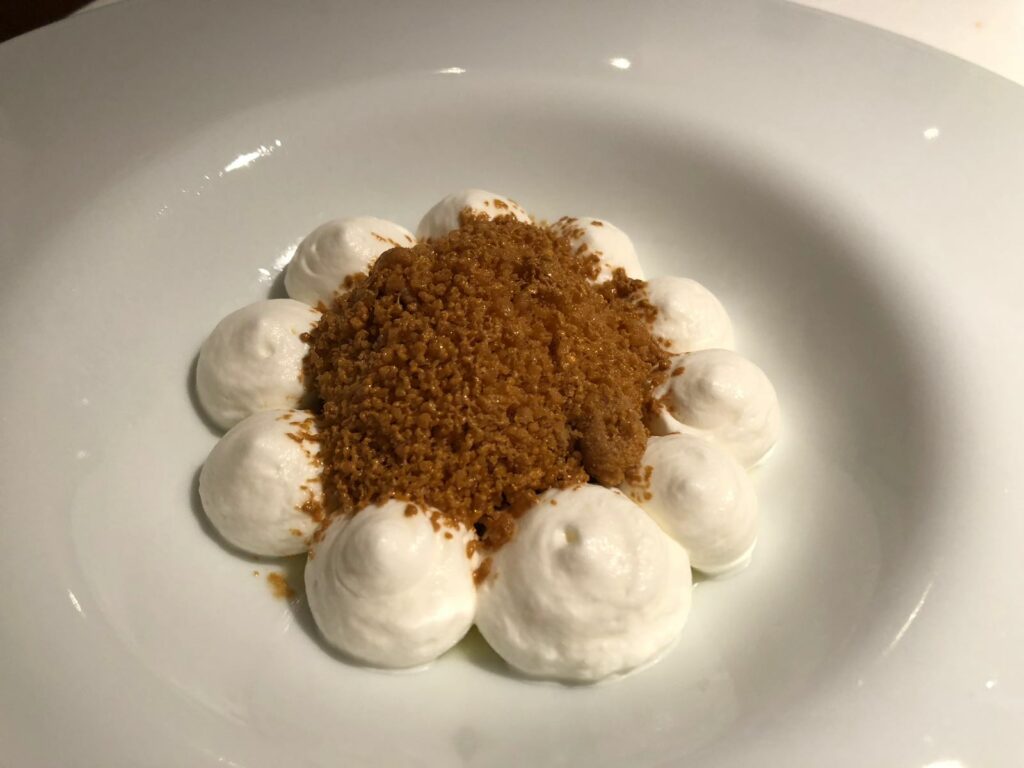
Overall this was an intriguing meal. We basically looked at the degustation menu of the chef, took out some dishes and substituted them with other a la carte dishes. What we liked most was that the best dishes were truly memorable. The problem was that there were not enough of them and the standard deviation of Romito’s cuisine was too high. For those who will dine in Abruzzo, I recommend the one Michelin star Villa Maiella more highly. Perhaps it is not as flashy or well known as Reale, but it is a true cuisine du terroir with perfectly executed excellent ingredients.
EVALUATION: 15/20
